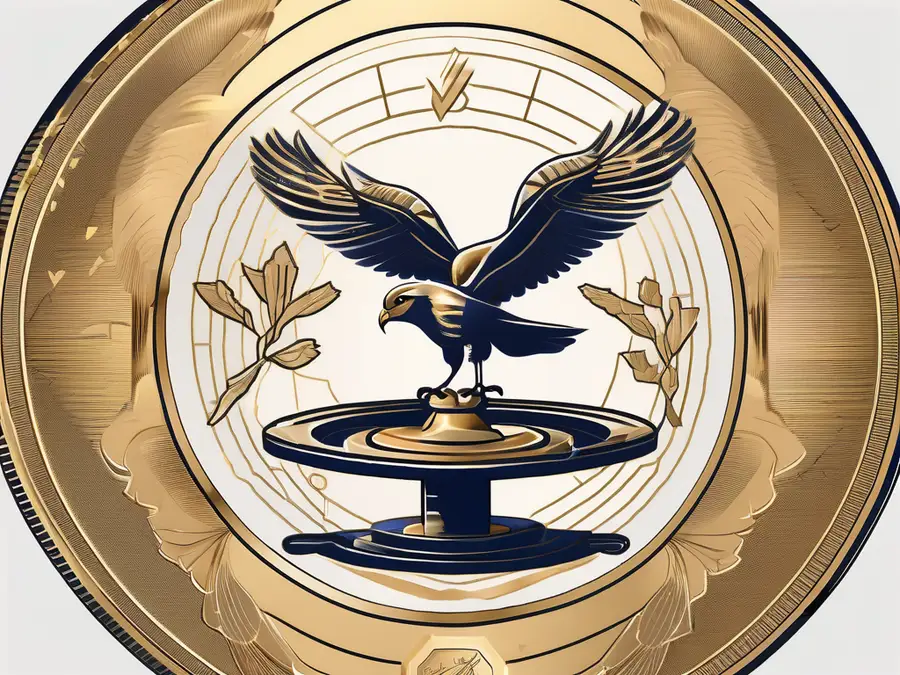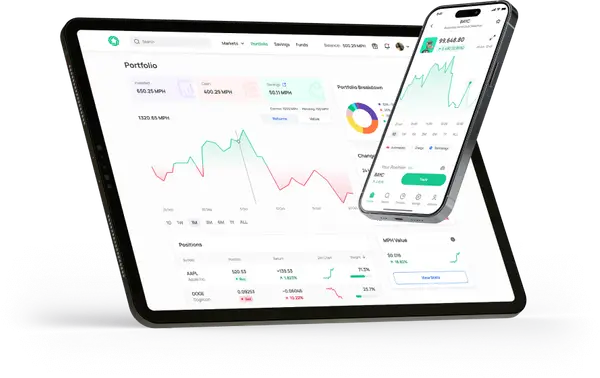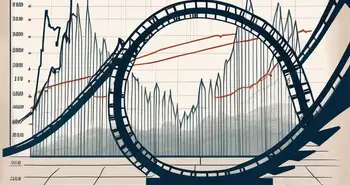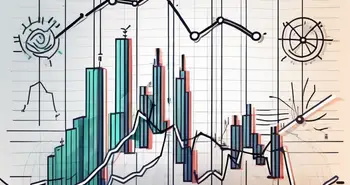Hawkish vs Dovish Monetary Policies

Ever wondered why interest rates fluctuate or why borrowing becomes easier during certain periods? The answer lies in the intriguing strategies central banks employ to control economic tides. Welcome to our comprehensive guide on hawkish and dovish monetary policies. In this article, we'll break down these critical concepts, illustrating how they impact inflation, employment, and overall economic health. Whether you're an investor looking to refine your strategy or simply curious about economic mechanisms, understanding these policies is key. Let's embark on this journey to uncover how central banks' decisions shape our financial world.
Understanding Monetary Policies
Monetary policies are a central bank's toolkit for regulating the economy, primarily by controlling inflation and interest rates. These policies include various tools such as adjusting interest rates, conducting open market operations, and setting reserve requirements. By managing the money supply and the cost of credit, central banks aim to maintain economic stability and foster growth. For instance, during periods of economic downturn, a central bank might lower interest rates to encourage borrowing and investment, while in times of high inflation, it might raise rates to cool down the economy.
Definition of Monetary Policy
Monetary policy encompasses the strategic actions taken by a central bank to control the money supply and influence interest rates, credit availability, and overall economic activity. These actions are designed to achieve macroeconomic objectives such as price stability, economic growth, and full employment. For example, quantitative easing (QE) is a form of monetary policy where a central bank purchases government securities to increase the money supply and lower interest rates, thereby stimulating economic activity.
Importance of Monetary Policy
Monetary policy is vital for steering economic direction. Through tools like interest rate adjustments, central banks can influence borrowing costs, consumer spending, and business investment. For instance, lowering interest rates can stimulate economic growth by making loans cheaper, encouraging spending and investment. Conversely, raising rates can help cool an overheating economy and curb inflation. Historical examples, such as the Federal Reserve's response to the 2008 financial crisis, highlight how monetary policy can be used to navigate economic challenges and support recovery.
Ready to navigate the financial landscape with confidence? Trade on Morpher today and leverage these insights for smarter investments. With zero fees, infinite liquidity, and the flexibility to trade across a multitude of asset classes, Morpher provides you with the tools you need to stay ahead of market trends influenced by central bank policies. Whether you’re responding to hawkish moves or dovish shifts, Morpher's innovative blockchain technology ensures a superior trading experience. Sign up now and get your free sign-up bonus to start trading with the advantages of fractional investing, short selling, and up to 10x leverage. Take control of your financial future with Morpher.

The Hawkish Approach
Hawkish monetary policy focuses on tightening the money supply to combat inflation and stabilize the economy. Central banks adopting a hawkish stance increase interest rates and reduce credit availability, aiming to slow economic growth and prevent the economy from overheating. This approach is typically used when inflation rates are high, and there is a risk of runaway prices. For example, in the late 1970s and early 1980s, the Federal Reserve under Chairman Paul Volcker implemented a hawkish policy to tackle high inflation, significantly raising interest rates to curb price increases.
Defining Hawkish Monetary Policy
Hawkish monetary policy involves tightening the money supply to combat inflationary pressures. Central banks increase interest rates and reduce the availability of credit to slow down economic growth and regulate inflation.
Implications of Hawkish Monetary Policy
Hawkish monetary policy can significantly impact various aspects of the economy:
- Price Stability: By curbing excessive inflation, it helps maintain the purchasing power of money.
- Foreign Investment: Higher interest rates attract foreign capital, as investors seek higher returns on local assets.
- Consumer Spending and Economic Growth: On the downside, increased borrowing costs can lead to reduced consumer spending and slower economic growth. For instance, higher mortgage rates can cool down the housing market, impacting sectors dependent on real estate.
The Dovish Approach
Dovish monetary policy aims to stimulate economic growth by loosening the money supply. Central banks reduce interest rates and increase credit availability, encouraging borrowing and spending. This approach is often used during economic slowdowns or deflationary periods. For example, in the aftermath of the 2008 financial crisis, central banks worldwide adopted dovish policies, slashing interest rates and implementing quantitative easing to revive economic activity and boost consumer confidence.
Defining Dovish Monetary Policy
Dovish monetary policy involves loosening the money supply to encourage borrowing and spending. Central banks reduce interest rates and increase the availability of credit to boost economic activity and combat deflationary pressures.
Implications of Dovish Monetary Policy
Dovish monetary policy can drive significant economic benefits:
Stimulating Growth: Lower borrowing costs boost consumer spending and business investment, promoting economic expansion.
Business Expansion: Easier access to credit encourages businesses to invest in new projects, expand operations, and hire more employees, leading to job creation and economic growth.
However, it's important to be aware of the potential drawbacks:
Increased Inflation: While stimulating the economy, dovish policies can also lead to higher inflation. When borrowing is cheap and spending increases, the demand for goods and services can outstrip supply, pushing prices higher.
Asset Bubbles: Excessive liquidity in the financial system can inflate asset prices, creating bubbles in markets such as real estate and stocks. When these bubbles burst, they can lead to significant economic disruption.
Key Differences Between Hawkish and Dovish Policies
Economic Impact
- Hawkish Policies: Aim to cool down an overheating economy and reduce inflationary pressures by tightening the money supply.
- Dovish Policies: Seek to stimulate economic growth and combat deflationary risks by loosening the money supply.
Influence on Inflation and Interest Rates
- Hawkish Policies: Generally result in higher interest rates to curb inflation.
- Dovish Policies: Tend to lower interest rates to encourage borrowing and spending.
The Role of Central Banks
Central banks play a crucial role in implementing both hawkish and dovish monetary policies. Their decisions are based on economic indicators such as inflation rates, employment levels, and GDP growth, as well as external factors like global economic trends and geopolitical events.
Central Banks and Hawkish Policy
When inflationary pressures become a concern, central banks may adopt a hawkish stance to maintain price stability. They monitor economic indicators and adjust interest rates to control inflationary trends and foster a healthier financial environment.
Central Banks and Dovish Policy
During periods of economic sluggishness or deflationary risks, central banks may implement dovish policies to stimulate economic activity. They use measures such as interest rate cuts and quantitative easing to encourage borrowing, boost spending, and jumpstart economic growth.
FAQ
What is the purpose of monetary policies?
The purpose of monetary policies is to regulate the economy, manage inflation, and control interest rates to promote stability, growth, and maximum employment.
What are the main differences between hawkish and dovish policies?
The main difference lies in their objectives and approaches. Hawkish policies aim to combat inflationary pressures by tightening the money supply, while dovish policies seek to stimulate economic growth by loosening the money supply.
How do hawkish and dovish policies influence interest rates?
Hawkish policies generally result in higher interest rates, while dovish policies tend to lower interest rates. The former aims to cool down an overheating economy, while the latter aims to encourage borrowing and spending.
What is the role of central banks in implementing monetary policies?
Central banks are responsible for implementing monetary policies. They monitor economic indicators, adjust interest rates, and use other tools to regulate the money supply and influence key factors such as inflation and borrowing costs.
In conclusion, understanding the differences between hawkish and dovish monetary policies is crucial for grasping the various strategies that central banks employ to manage economies. Both approaches have their strengths and weaknesses, and central banks must carefully analyze economic dynamics to determine the most appropriate policy stance. As experts in the field, we must continually monitor these policies and their implications to navigate the ever-changing financial landscape.
As you navigate the complexities of hawkish and dovish monetary policies, the right trading platform can make all the difference. Morpher is designed to empower you in this dynamic financial landscape, offering zero fees, infinite liquidity, and the flexibility to trade across a multitude of asset classes. Whether you're adjusting your strategy in response to central bank decisions or looking to capitalize on market movements, Morpher's innovative blockchain technology provides the tools you need for a superior trading experience. Sign Up and Get Your Free Sign Up Bonus today to start trading with the advantages of fractional investing, short selling, and up to 10x leverage on a platform that puts you in control.

Disclaimer: All investments involve risk, and the past performance of a security, industry, sector, market, financial product, trading strategy, or individual’s trading does not guarantee future results or returns. Investors are fully responsible for any investment decisions they make. Such decisions should be based solely on an evaluation of their financial circumstances, investment objectives, risk tolerance, and liquidity needs. This post does not constitute investment advice.

Painless trading for everyone
Hundreds of markets all in one place - Apple, Bitcoin, Gold, Watches, NFTs, Sneakers and so much more.

Painless trading for everyone
Hundreds of markets all in one place - Apple, Bitcoin, Gold, Watches, NFTs, Sneakers and so much more.









